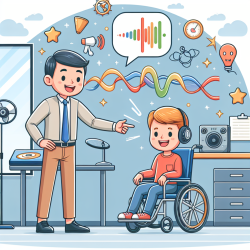The study "2D:4D Ratio and Autism Spectrum Disorder in Brunei Darussalam" sheds light on a potential biomarker for early autism diagnosis, which could revolutionize the way we approach autism spectrum disorder (ASD) in educational settings. As a practitioner, understanding and implementing these findings can significantly enhance your diagnostic toolkit and intervention strategies.
Understanding the 2D:4D Ratio
The 2D:4D ratio refers to the length ratio of the second digit (index finger) to the fourth digit (ring finger). Research indicates that a lower 2D:4D ratio, particularly in males, is associated with higher levels of prenatal testosterone exposure, which may correlate with ASD. The study in Brunei Darussalam found that males with ASD had a significantly lower median 2D:4D ratio in their left hand compared to typically developing (TD) males.
Practical Implications for Practitioners
- Early Screening Tool:
- Integrating 2D:4D ratio measurements into early screening processes can help identify children who may be at risk for ASD, particularly in male students. This can be a non-invasive, cost-effective preliminary screening tool.
- Complementing Existing Diagnostic Tools:
- Use the 2D:4D ratio as a supplementary measure alongside traditional diagnostic tools like the Autism Diagnostic Observation Schedule (ADOS) and the Screening Tool for Autism in Toddlers and Young Children (STAT). This multi-faceted approach can provide a more comprehensive understanding of a child's developmental profile.
- Gender-Specific Approaches:
- The study highlights the importance of considering gender differences in ASD diagnosis. While the 2D:4D ratio may be a useful marker for males, it was not significantly associated with ASD in females in this study. This suggests that different diagnostic criteria or additional markers may be necessary for females.
Encouraging Further Research
While the findings are promising, they also underscore the need for further research to validate the 2D:4D ratio as a reliable diagnostic tool across different populations and age groups. Practitioners are encouraged to participate in or support research initiatives that explore these biomarkers in larger, more diverse samples.
Implementing the Findings in Your Practice
- Training and Workshops: Attend workshops and training sessions on the latest ASD diagnostic tools and research findings. This will keep you updated on innovative approaches and help you integrate new methods into your practice.
- Collaborate with Researchers: Engage with researchers to stay informed about ongoing studies and contribute to the body of knowledge through practical insights from your experience.
- Educate Parents and Caregivers: Share these insights with parents and caregivers to help them understand the potential of early screening and the importance of comprehensive diagnostic evaluations.
By leveraging the insights from the 2D:4D ratio research, practitioners can enhance their diagnostic accuracy and provide timely interventions that can significantly improve the quality of life for children with ASD and their families.
To read the original research paper, please follow this link: 2D:4D Ratio and Autism Spectrum Disorder in Brunei Darussalam.










